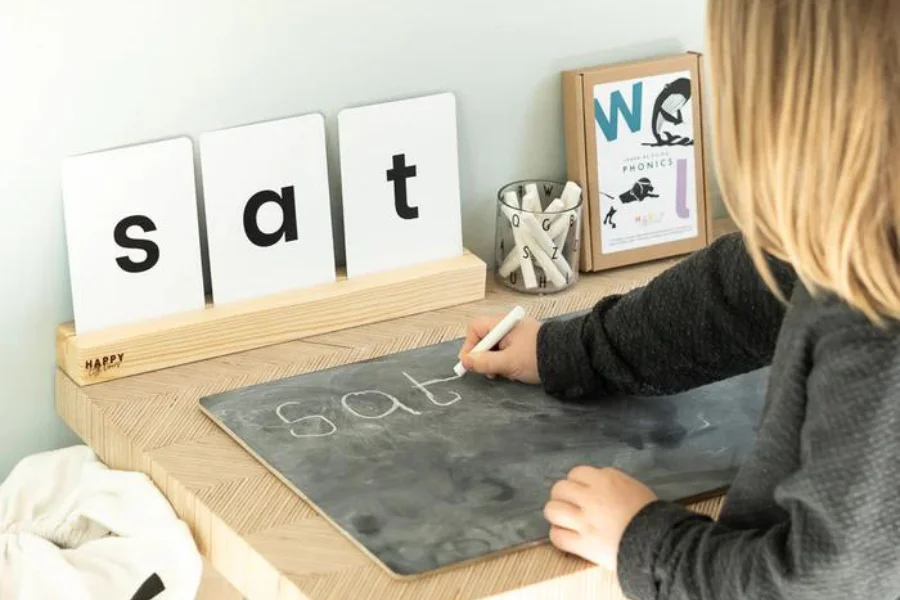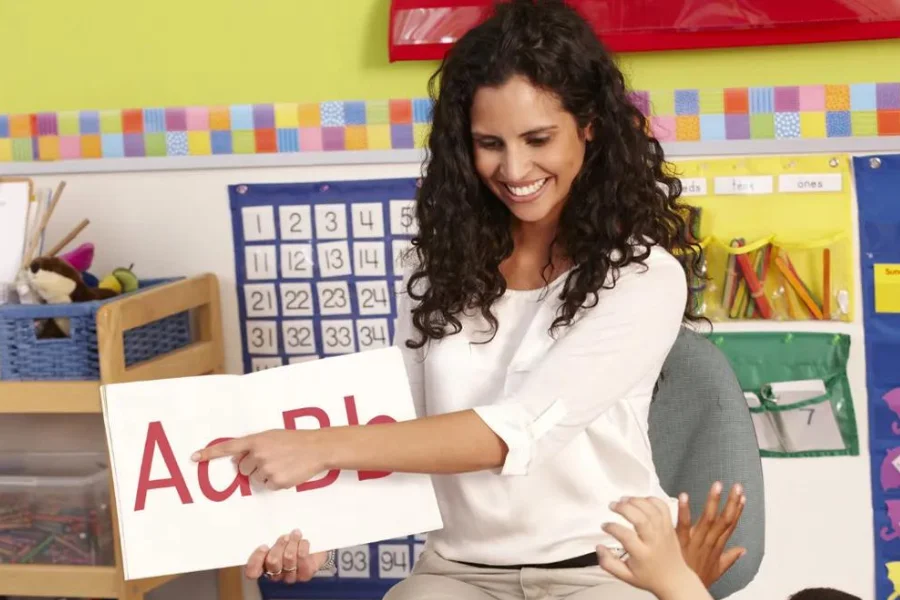
Source: phonicspower
Phonics Programs for Teachers equip educators with the modern yet practical tools to teach the association between letters and sounds effectively. An understanding of this association helps students interpret sounds in any word they encounter, thus developing reading fluency. With Phonics Programs for Teachers, educators can lay a solid foundation for their students’ reading aptitudes, ensuring they advance easily and confidently.
For more details of Phonics Course Call / Whatsapp +919869866277/+919869546913
To Download Brochure of Phonics Course, Click Here!
Introduction to Phonics Programs for Teachers
With Phonics Programs for Teachers, one can shape the initial literacy skills of young learners. Introduction to Phonics Programs for Teachers equips students with the aptitude to interpret words effortlessly and accurately by emphasizing the vital association between written letters and spoken sounds It becomes effortless to assist students through the early stages of reading by becoming skilled at phonics, thus helping them identify letters, know their related sounds, and read words and sentences effortlessly. Effective phonics instruction is the key to children evolving as adept readers and writers.
Key Strategies for Effective Phonics Instruction
How to Introduce Letter Sounds
Introducing letter sounds is a critical and foremost step in phonics instruction.
Here are some Key Strategies for Effective Phonics Instruction:
Start Simple
Begin with basic consonants and vowels that can be easily learned by children. e.g. /a/, /m/, /f/, /v/, etc.
Visual Aids
Utilize pictures and flashcards to associate each letter with its sound. For example, with a picture of an apple, children can remember the /a/ sound.
Practice
Support children’s understanding of the sounds through melodies, rhymes, and interactive games to make learning engaging and unforgettable.

Source: oakndeve
Steps to Follow for Introducing Letter Sounds:
Blending
Concept
In blending, individual sounds are combined to form words.
Example
Show how to blend /c/, /u/, and /p/ to make ‘cup.’
Practice
Gradually introduce more complex words as students become proficient with simple words.
Segmenting
Concept
In Segmenting, words are broken into their constituent sounds.
Example
Explain breaking down the word ‘dog’ into /d/, /o/, and /g/.
Application
This skill helps students understand the structure of words and therefore is crucial for both reading and spelling
Spelling Rule CK
Rule
According to the CK rule, if the /k/ sound comes after a short vowel sound and at the end of a word, it is typically spelled with ‘ck.’
Examples
Words like ‘duck’, ‘kick’, ‘sick,’ etc.
Reference Pictures
Use visual aids depicting these words to reinforce the spelling rule, such as pictures of a duck or someone kicking a ball.
Sight Words
Teaching
Familiarize common sight words that fail to follow regular phonetic patterns, such as ‘the’, ‘was’, and ‘are’.
Practice
Motivate children to frequently participate through flashcards, reading exercises, and writing activities to aid memorization and recognition.
Floss Rule (SS/FF/ZZ/LL)
Explanation
According to the floss rule, the consonant /s/, /f/, /z/, or /l/ is doubled when it comes after a vowel and at the end of a word.
Examples
‘off’, ‘buzz’, ‘bell,’ stuff,’ etc.
Teaching Tip
Use word lists and spelling activities to help students internalize this rule.
Long Vowel Sounds and Spelling Rules
Long A (ai-ay)
- Teaching: Teach that the long A sound can be spelled as ‘ai’ in the middle of a word and ‘ay’ at the end.
- Examples: rain, play, etc.
Letter J & Rabbit Rule
- Teaching: After a long vowel or at the end of a word, use ‘j’ for the /j/ sound.
- Examples: jog, jump, etc.
Long O (oa-ow)
- Teaching: The long O sound can be spelled with ‘oa’ in the middle and ‘ow’ at the end.
- Examples: boat, snow, etc.
Long I (ie)
- Teaching: The long I sound can be spelled with “ie”.
- Examples: Words like “pie” and “tie”.
Long E (ee-ea)
- Teaching: The long E sound can be spelled with “ee” or “ea”.
- Examples: Words like “see” and “eat”.
Bossy R (or)
- Teaching: Explain how the ‘r’ changes the vowel sound.
- Examples: Words like “car” and “bird”.
WH Question Words
- Teaching: Introduce common WH question words.
- Examples: “what”, “where”, and “why”.
Magic E
- Teaching: With the magic ‘e’ at the end of a word, the vowel sound changes from short to long.
- Examples: cake (long A) and hope (long O).
By following these approaches and combining various Phonics Rules, Phonics Programs for Teachers can create a systematic and effective learning atmosphere. This method ensures that students develop the vital skills needed for proficiency in reading and comprehension, preparing them for academic success and a lifelong affection for literacy.

Source: abcsofliteracy
Phonics Teacher Training Courses
Phonics Teacher Training Courses help ambitious educators wishing to build a strong basis in reading and writing for their students. Teachers are equipped with the understanding and vital skills essential to teach the phonics fundamentals with these Phonics Programs for Teachers. Vidhyanidhi Education Society has an outstanding Phonics Programs for Teachers, certifying educators to conduct effective phonics instruction in their classrooms.
Key Benefits of Phonics Teacher Training Courses:
Phonics Teacher Training Courses provide educators with the modern tools and creative techniques to help students develop essential linguistic skills.
To read and write adeptly, students must grasp the subsequent five fundamental skills:
Letter Sounds
Comprehending the sounds associated with each letter is the foremost step in phonics. Teachers learn how to introduce and reinforce these sounds effectively.
Letter Construction
Students must learn how to form letters correctly. The Phonics Programs for Teacher course includes techniques for teaching proper letter construction.
Blending
This skill involves combining individual letter sounds to form words. Teachers are trained to guide students while learning this process, ensuring they can blend sounds effortlessly and confidently.
Sound Recognition in Words
Identifying sounds within words is critical for reading and spelling. The Phonics Programs for Teachers teaches strategies for helping students recognize sounds in different contexts.
Spelling Confusing Words
English is full of irregular spellings and tricky words. Phonics Teacher Training Courses provide methods for teaching students how to spell these words accurately.
Vidhyanidhi Education Society (Govt. Regd.) offers an all-inclusive Phonics Programs for Teachers, intended to address all features of phonics instruction. This course not only covers the five vital literacy skills but also includes innovative teaching techniques to ensure that educators can meet the varied requirements of their students.
The Phonics Teacher Training Courses offered by Vidhyanidhi Education Society (Govt. Regd.) are a priceless resource for educators. On completion of these courses, educators can teach phonics in appealing and effective ways that can be adapted to the specific needs of students. Teachers can cultivate a liking for reading and writing with this training, thus setting their students on a path to academic success and lifetime literacy.
Transform your teaching skills! Join Vidhyanidhi’s Phonics Course today for success!
For more details of Phonics Course Call / Whatsapp +919869866277/+919869546913
To Download Brochure of Phonics Course, Click Here!
FAQs
What are the objectives of phonics for teachers?
The objectives of phonics for teachers are to develop language and comprehension skills in students using phonemic awareness.
What do teachers need to know about phonics?
Teachers need to comprehend letter sounds, blending, segmentation, phonics rules, approaches to teaching phonics, etc to expand students’ reading and writing skills.
What are the benefits of teaching phonetics?
Teaching phonetics expands students' reading accuracy and comprehension. Vidhyanidhi Education Society offers courses that equip teachers with effective phonics teaching methods.



